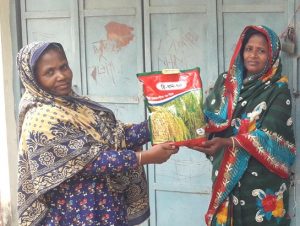470,000 in need of shelters; 13,418 take part in biometric registration
AKM Moinuddin, UNB Staff Writer
Dhaka, Sept 25 – The land that has been allocated for the new site for providing shelter to Rohingyas is ‘not suitable’ for habitation yet, says a new report on Sunday.Population movement within Cox’s Bazar remains highly fluid with the increasing concentration on Ukhia where the government has allocated 2,000 acres for a new camp, according to the report.
People have begun arriving at the newly proposed site before the establishment of infrastructures and services.
More importantly, the report claims, there is limited access to the site as there is no road through this site, which is preventing the development of infrastructures, including water and sanitation facilities.
“There’s no road access, and the population density inaccessible areas are extremely high which poses multiple risks,” says the report.
An estimated 470,000 people are in need of shelter support that includes people who arrived prior to and after August 25, according to the report.
The newly created spontaneous sites are not yet suitable for mass habitation, with a lack of basic access and infrastructures, particularly water and sanitation facilities, the report adds.
There are massive unmet shelter and site management needs across all the sites, according to the Situation Report: Rohingya Refugee Crisis produced by the Inter-Sector Coordination Group (ISCG) in collaboration with humanitarian partners.
The report covered the situation from September 16-21, 2017. The next report will be issued on October 1.
Of all the new arrivals, 429,000 are in need of emergency food assistance. Among the new arrivals, an estimated 55,770 pregnant and lactating women, and children under 5 require targeted food assistance.
Some 5.8 million food rations are required to meet people’s emergency food assistance needs.
Since 25 August, food security partners have provided 4.6 million individual food rations and food security partners have reached 358,979 people, or 84 percent of the population, with some form of food assistance.
Of the new arrivals, 6,219 pregnant and lactating women, and children under five – 11 percent of the target population – have received a targeted food assistance, says the report.
The vast majority of food assistance provided is rice and fortified biscuits; only 83,639 new arrivals have received a full food ration. Conditions across all the sites have been severely affected by heavy rains.
There is a significant need for camp management staff and agencies to be identified and allocated to all areas of all sites to ensure basic site coordination is in place.
Since 25 August, 30,000 households with 150,000 people have been provided with emergency shelter kits.
Site planning is primarily focused on establishing basic road access to Kutupalong Expansion Site, as well as the upgrade of footpaths within the site. “Footpaths are being upgraded through community mobilisation activities.”
A site development task force has been established.
Some 106,000 of the newly arrived Rohingya children are in need of education services and 27 schools and learning centres are currently used as temporary shelters for more than 7,000 new arrivals, hampering the children’s access to education.
And 7,200 children have been provided with fortified biscuits in learning centres and schools in Kutupalong and Balukhali.
As a result of the influx, the education sector is working with food sector partners to increase coverage to all children attending the learning centres.
Over the last two days, movement across the border reportedly decreased with only small numbers of people noted to be moving into Cox’s Bazar, the report observed.
The government of Bangladesh has deployed the Army to support the distributions undertaken by the Government and private individuals.
The Army is planning to support the construction of new roads to ensure better access to all sites, said the report.
As of September 23, some 13,418 people had taken part in the government’s biometric registration; large crowds of people have been observed waiting to be registered.
UNHCR has deployed equipment and technical capacity to support the Government of Bangladesh in this process.
Violence in Rakhine State which began on August 25 has driven an estimated 436,000 Rohingya refugees across the border into Cox’s Bazar.
The speed and scale of the influx have resulted in a critical humanitarian emergency, said the report.
The people who have arrived in Bangladesh came with very few possessions and they have used a maximum of their savings on transportation and constructing a shelter, often out of no more than bamboo and thin plastic.
The government has established a mechanism to receive donations from private individuals and organisations that are not registered to work in Cox’s Bazar, said the report.




